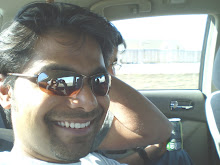How to Apply Lean Principles
By Norman Bodek
I have been reading a new book by Jeffrey K. Liker and Michael Hoseus Toyota Culture. It is excellent and worthy of your read but even though the information is great, how do you apply it in your company? What is the process to internalizing knowledge and applying it effectively on the job?
This has been an ongoing problem for me personally. I was the owner and publisher of Productivity Press and produced probably 300 books and training courses on Toyota and Japanese management. I would go to Japan often, 67 times to date, and see what was new at over a dozen Japanese business publishers, visit the top business bookstores in Tokyo: Junkudo, Kinokuniya, Yaesu, and others, and ask managers what they read. I cannot speak Japanese nor read Japanese, at all, so I had to rely on my intuition and the opinion of the people I met before I would invest $25,000 and up to translate and produce in English a Japanese book. My track record was pretty good for I only couldn’t publish maybe one of five books that I had translated to English. But, still the problem for me and my readers was how to apply what was in the book?
Reading the Toyota Culture could overwhelm you, for the book explains what has taken Toyota over fifty years to understand and apply. Is it possible to change your organizations culture and, if yes, where do you start? I will tell you what I do. When I read the book I underline the things that are important to me. (It is not sacrilegious to write in a book.) Then I go back and capture the things I underlined. I do this now using Dragon Natural Speaking version #9. I read to my computer what I underlined and it is automatically converted to Microsoft Word. I then take out the pertinent parts and develop a set of power point slides to allow me to teach others.
To change a culture in America is not easy. Most top managers here are glued to building profit, not understanding that it is in building people that builds profit. We are locked into a Top Down style and shifting to a Bottoms-up style is not easy. If you read my work before, you know that I love Quick and Easy Kaizen, for it is such an easy way to get started. Instead of waiting for senior managers to change, you simply ask all employees to identify and then solve very small problems within their own work area. The manager’s job is to ask everyone to submit two ideas per month and then to just listen to people’s ideas and support them to implement the ideas. It is not the old suggestion system where you come up with an idea for someone else to implement.
And the culture begins to change as people are now empowered to make decisions that apply to their own work. One of my earlier published books was 20 Million Ideas, 40 Years at Toyota. It was about how Toyota began to involve their employees in problem solving activities and it was the key to how they began to change their culture.
I recently took my new Dr. Shigeo Shingo book Kaizen and the Art of Creative Thinking, The Scientific Thinking Mechanism (STM) and read it for the fourth time, underlined the important points, summarized those points and created a set of power point slides. Now, I have to experiment and teach STM to others.
Dr. Shingo taught STM to over 3000 Toyota engineers and managers. In the book on pages 30 to 34 you will read how Dr. Shingo describes the distinction between Process and Operation. In fact, almost every Dr. Shingo book has this description. He was very proud of this discovery. It came to him in 1948 and was the foundation to the Toyota Production System – it clearly teaches that transportation, inspection, and waiting are non-value adding wastes. It became the heart of his future teaching and he used it in his daily consulting practice. While others focused on optimizing machines or workers with machines, Dr. Shingo could walk into a factory and immediately see the wastes and the opportunities to remove them.
Another great way to give you the power to get started is to come with me on a study mission to Japan. I am going from April 18th to the 26th. We will visit Hino, a Toyota truck and bus company, Lexus and some of the Toyota top tier suppliers, Canon and Hitachi. It will be intense but you will see with your own ideas and learn the subtle but very powerful things that the Japanese do. Once you see with your own eyes it becomes much easier to apply your experience back on the job.
I remember many years ago, I was working in Grenada, West Indies and we were challenged to do, what looked like an impossible job to do. I looked at our operators, lovely people, but I was unconvinced that we were able to do the work successfully. Then it occurred to me that the job was being done in Jamaica and in New York City. With that feeling I turned to our employees and said, “Look if they can do so can we.” And sure enough we were able to do it very successfully. It was only me, the real obstacle, to overcome my resistance.
Everyone really resists change for we have been taught to be afraid of making mistakes. Well, I recommend that you take from your book reading what you really like, gather a team around you, take a deep breath and like Dr. Shingo would always say, “DO IT!”
Norman Bodek - Author of Kaikaku The Power and Magic of Lean and The Idea Generator.
Subscribe to:
Posts (Atom)

